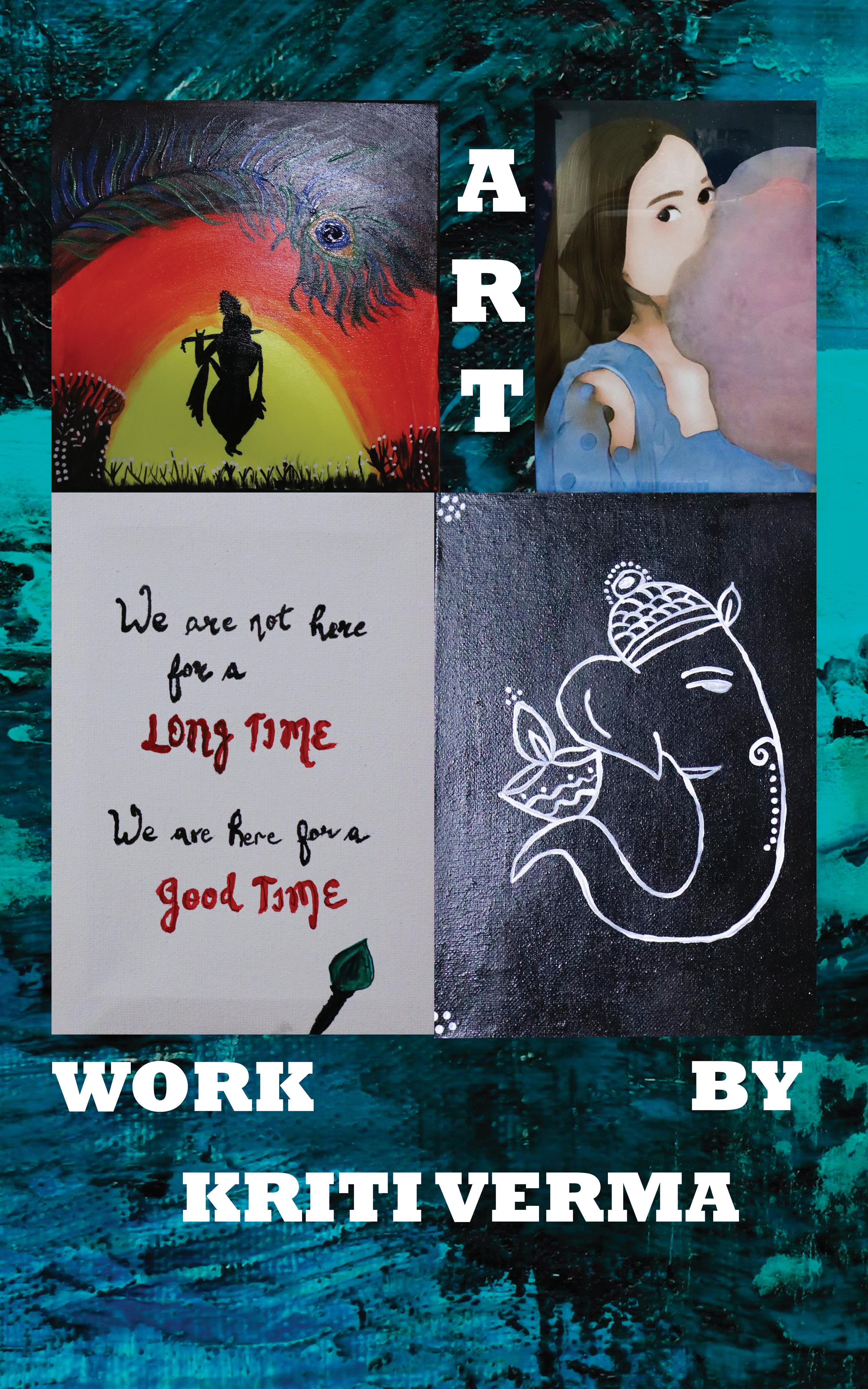




the staff editor-in-chief holly funk editor@carillonregina.com
business manager thomas czinkota business@carillonregina.com production manager shae sackman production@carillonregina.com advertising manager holden norrie ads@carillonregina.com communications mehrnoush bahramimehr comms@carillonregina.com web manager vacant tech@carillonregina.com multimedia/graphics editors multimedia@carillonregina.com safal gangwani graphics@carillonregina.com lee lim copy editor aurel dumont copyeditor@carillonregina.com news editor gillian massie news@carillonregina.com a&c editor wren gessner arts@carillonregina.com s&h editor vacant sports@carillonregina.com op-ed editor hammad ali op-ed@carillonregina.com distribution manager vacant distribution@carillonregina.com staff writer amina salah staff writer victoria baht staff writer vacant news writer josh king a&c writer jorah bright s&h writer sophia stevens
contributors katlyn richardson, will spencer, kriti verma board of directors holly funk and honourary members: thomas czinkota, shiva souri, jorah bright, hammad ali, shae sackman, and amina salah
We’re undoubtedly coming out the 2023 gate swinging with this issue, and cannot wait to see what the rest of this semester will bring to our pages. It’s a student newspaper’s responsibility to publish work of interest to (and in the best interest of) students, so if you know of something we haven’t yet covered that you believe should be on our radar, always feel free to send pitches in to our editing staff for consideration.
We’re also looking to widen the scope of our graphics section this semester, so if you have visual art, graphic design work, poetry, or short fiction stories that you’d like us to consider, they can be submitted at any time. Best of luck through this winter in weathering all that’s to come.
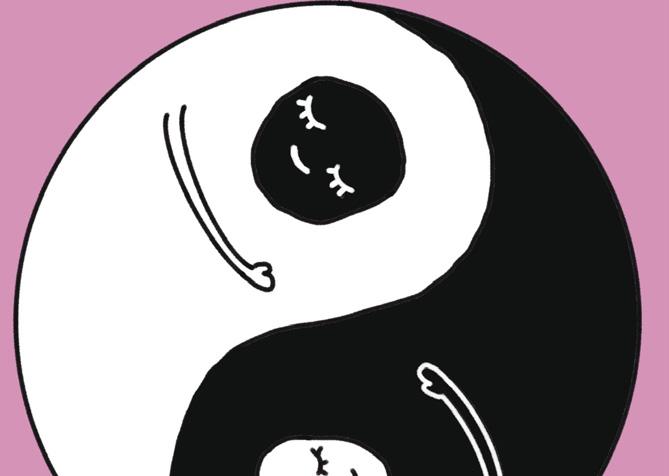
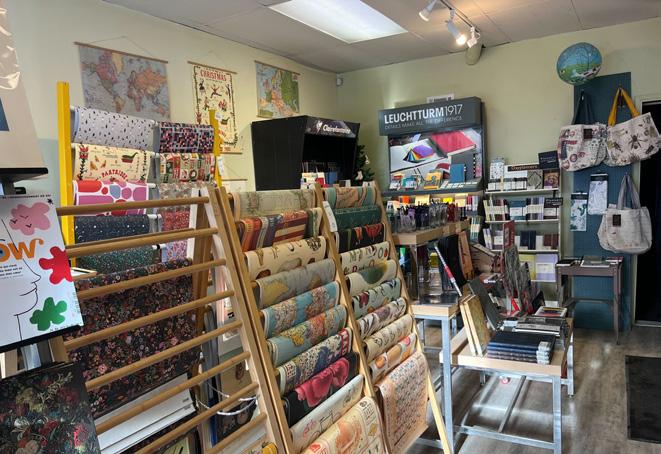

Illegitimi non carborundum.

227 Riddell Centre University of Regina - 3737 Wascana Parkway, Regina, SK, Canada S4S 0A2 www.carillonregina.com Ph: (306) 586 8867
Printed by Star Press Inc, Wainwright, AB

The Carillon welcomes contributions.
Opinions expressed in the pages of the Carillon are entirely those of the author, and do not necessarily reflect those of the Carillon Newspaper Inc. Opinions expressed in advertisements appearing in the Carillon are those of the advertisers, and not necessarily of The Carillon Newspaper Inc. or its staff.
The Carillon is published no less than 11 times each semester during the fall and winter semesters and periodically throughout the summer. The Carillon is published by the Carillon Newspaper Inc., a non-profit organization.


The Carillon is written on Treaty 4 territory. As such, staff recognize that we are living, working, and telling stories on and of Indigenous lands. We recognize that we are on the traditional homelands of the Cree, Saulteaux, Nakota, Lakota, and Dakota peoples, along with the homeland of the Métis nation. The Carillon understands that it is pointless to acknowledge the land on which we work without demonstrating our commitment to telling stories and prioritizing voices that further the return of this land to its sacred place.

the manifesto
In keeping with our reckless, devil-may-care image, our office has absolutely no concrete information on the Carillon’s formative years readily available. What follows is the story that’s been passed down from editor to editor for over sixty years.
In the late 1950s, the University of Regina planned the construction of several new buildings on the campus grounds. One of these proposed buildlings was a beltower on the academic green. If you look out on the academic green today, the first thing you’ll notice is that it has absolutely nothing resembling a belltower.
The University never got a belltower, but what it did get was the Carillon, a newspaper that serves as a symbolic bell tower on campus, a loud and clear voice belonging to each and every student.
Disclaimer: The Carillon is pledged to avoid conflicts of interest or the appearance of conflict of interest wherever and whenever possible. To uphold these values, certain members of the Carillon, namely news editor Gillian Massie and editor-in-chief Holly Funk, will not be involved with any part of the writing, editing, or producing of coverage on these topics, given their personal involvement in these matters.
Over the course of the last year, particularly the 2022 fall semester, concerns have circulated regarding a toxic learning and working environment in the School of Journalism (J School) at the University of Regina. On December 12, the Carillon sent a letter to certain relevant parties requesting a response to allegations made against both students and faculty of targeted harassment, critiques of general culture, and specific incidents that cannot be disclosed due to the desired anonymity of certain involved parties.
In response to the culture at the J School, several students reported suffering mental health declines and some classes had extremely low attendance because students did not feel comfortable showing up for certain classes near the end of the winter 2022 semester. During the fall 2022 semester, a Journalism class had to be moved online, allegedly because a student raised their voice at the professor. Students have complained that re-
quests for accommodations have often been ignored throughout the difficulties of these semesters.
On December 13, two courses offered by the J School in the winter 2023 semester were cancelled due to the J School having “received no suitable applicants to teach” the courses. Third- and fourth-year students set to graduate are now scrambling to fill the necessary credits.
On December 15, the Carillon received a response to the letter from the dean of arts, Shannon Dea, responding on behalf of both the J School and the faculty of arts. The correspondence confirmed that the University of Regina, J School, and faculty of arts are aware of certain concerns and are taking steps to address them with “appropriate seriousness.”
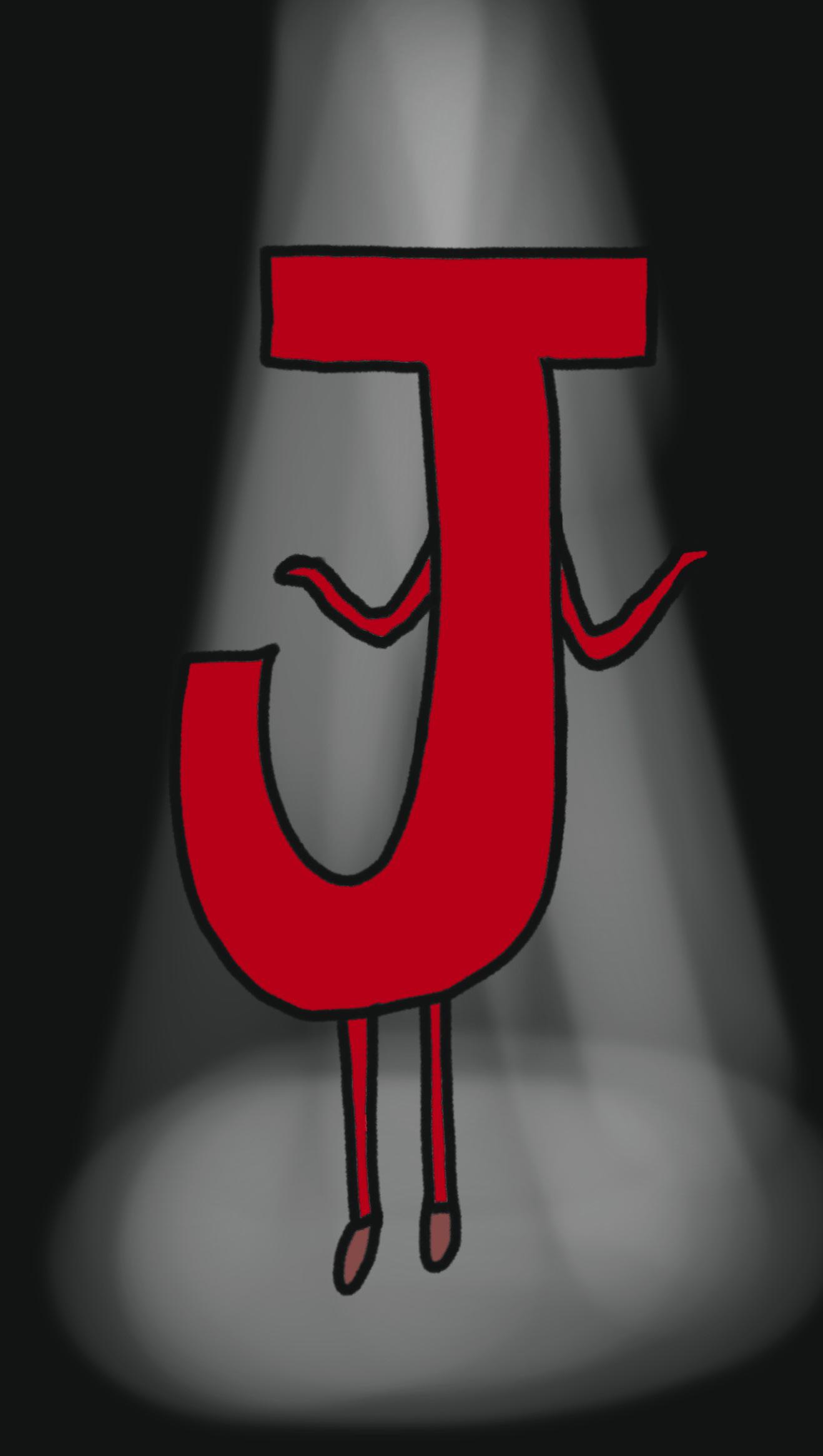
Later that day, the J School publicly announced they would be suspending student admissions for the 2023-2024 academic year.
It was confirmed by multiple sources that the faculty of arts’ council passed a motion to suspend admissions to the J School. However, the faculty of arts’ council agenda and minutes can no longer be found online as of March 2012.
The allegations of harassment and bullying in the J School were not mentioned in the statements made by the dean of arts to CBC and Regina Leader-Post.
The reasoning given for the closure by the dean in an email to the Carillon is that “this ‘hiatus’ is intended to renew and redevel-
op the School and its programs. It also provides an opportunity to evaluate the School’s climate in order to ensure the J-School is a safe and supportive place to learn and to work.”
Some students have reported that they met with senior officials in the faculty of arts to discuss their experiences in the J School, which was confirmed in an email with the dean of arts, who clarified that the meetings were not an official investigation. The Carillon is aware of some students who were involved in the situation but were not invited to these meetings.
While the J School is the most recent faculty under scrutiny, a survey published by StatsCan in 2021 about faculty at post-secondary institutions reports that 34% of women and 22% of men reported harassment or bullying in the workplace. This is compared to only 19% of women and 13% of men in workplaces across Canada, hinting that there may be a larger issue at universities than in the general populace. The StatsCan study about post-secondary faculty also stated that Indigenous people, people with disabilities, and sexual minorities were the most likely to face workplace harassment.
This is an ongoing story. Check the Carillon for updates.
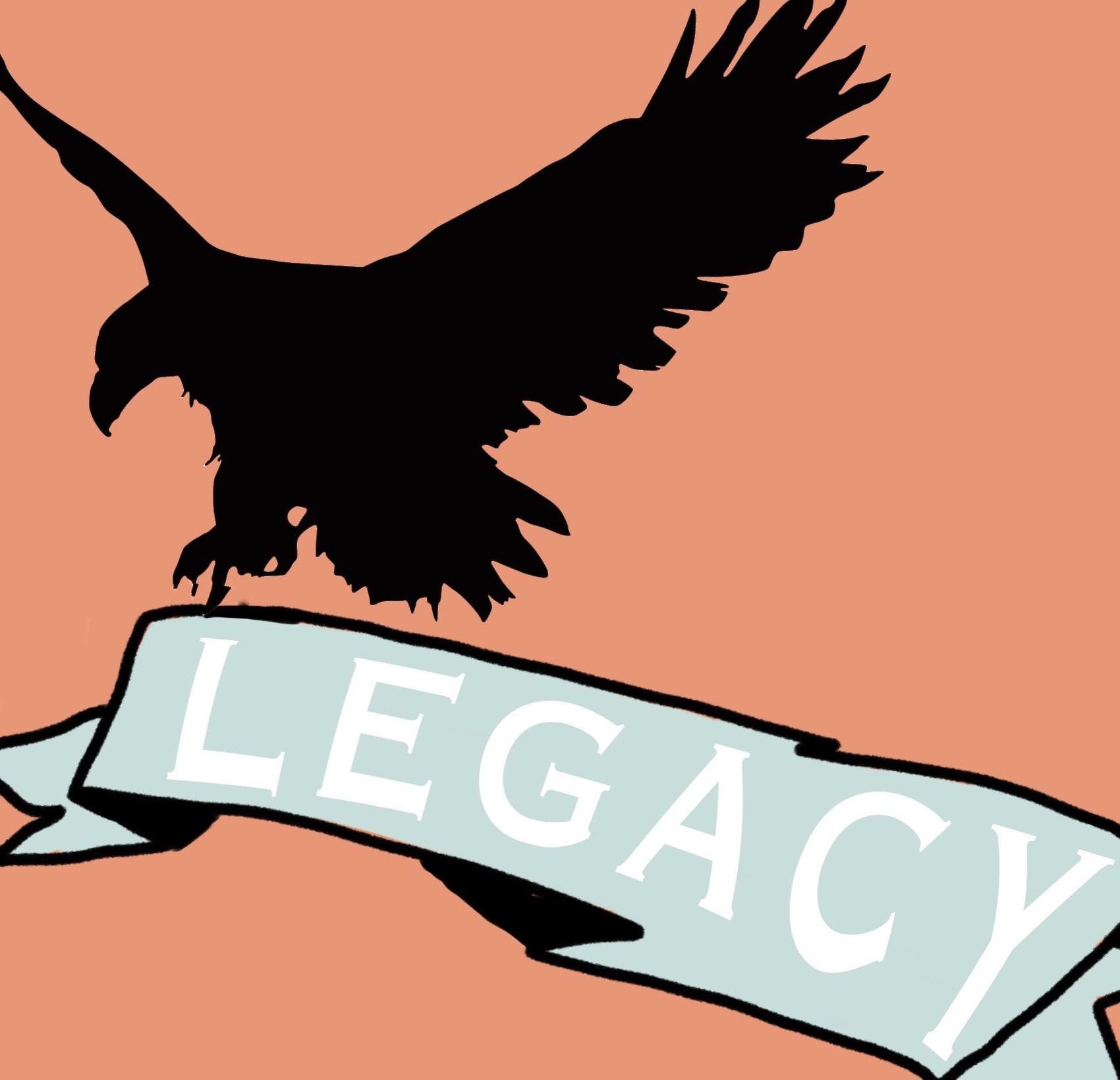
Allegations of abuse at independent schools rocked Saskatchewan in 2022. Last month, the Carillon covered a class-action lawsuit against Saskatoon-based Legacy Christian Academy (LCA) and Mile Two Church which alleged physical, sexual, and emotional abuse. An amended statement of claim was filed on December 12, and the lawyer told the CBC that the class action suit now has nearly 100 former students who have applied to be a part of it.
The lawsuit was amended to include four new defendants and detail the allegations against these new defendants. Two of the new defendants were a former director and a former children’s director at Mile Two Church. One of the defendants, Randy Donauer, is currently sitting on Saskatoon City Council serving his third term. The lawsuit alleges that Donauer paddled one of the plaintiffs at a summer camp over gossiping and telling jokes. The same plaintiff alleges that the abuse he received was due to adults learning that he is homosexual.
When the plaintiff was 15, he recalls that school staff gave him
the option of going to conversion therapy or being expelled. In the statement of claim, Donauer is accused of being “instrumental in the development and implementation of the policies and procedures.” Of note, Donauer’s voting record involved twice voting against city council propositions to disavow conversion therapy, and a homophobic lobbying group known as Campaign Life Coalition has openly supported him.
The final new defendant named in the amended statement of claim is the Government of Saskatchewan, alleging the Ministry of Education committed gross negligence. The claim alleges that the Ministry of Education was aware of the fact that Legacy Christian Academy was using uncertified teaching staff. Despite this breaking the ministry’s requirements for independent schools, no intervention occurred.
It is also alleged that the ministry did not do any inspections of the school, despite the ministry’s statements that they perform three per year. These allegations directly accuse the ministry of lying to the public. I contacted the Ministry of Education about these allegations specifically and was told that they could not com-
ment on an ongoing court case.
NDP education critic Matt Love commented on the allegations of gross negligence. “In June 2016, the Saskatchewan Higher Education Quality Assurance Board urged him to explicitly tie accreditation to the upholding of human rights in light of abuse allegations at Briercrest College,” Love said in an emailed statement. “He ignored the request, as did the four Sask. Party Advance Education Ministers that came after him. This lawsuit is just further proof of the Sask. Party’s record of sweeping allegations of abuse in publicly-funded schools under the rug.”
According to the 2020-2021 tax return for Mile Two Church Inc., the organization that runs both the church and school, they received a little over $900,000 from the provincial government and almost $200,000 from the federal government. Together, government payments account for just over 45 per cent of Mile Two Church Inc.’s funding. Most of their remaining funding came from donations that were tax-receipted.
As reported previously by the Carillon, the Ministry of Education appointed administrators to LCA in response to the allega-
tions. Two other schools which have administrative staff who are included in the lawsuit have also had appointed administrators, and teachers who were named in the lawsuit are no longer in the classroom. The ministry also stated that unannounced supervisory visits will be increased, and created a requirement for all allegations of criminal activity at
a qualified independent school to be reported to the Ministry of Education. The plaintiffs in the class action lawsuit believe this is not enough, stating in the amended statement of claim: “the basis of facts and circumstances […] of this Amended Statement of Claim which clearly make it inappropriate that the School continue to operate.”
the carillon since 1962 Reports of harassment and a toxic culture at the University of Regina’s Journalism SchoolWhen the new Brad Hornung Accommodations Test Centre for students was announced, I was skeptical of how well the centre would serve students like myself. But now, after having used the centre a few times, I can say that this centre is one of the few times the university has not utterly failed at meeting accessibility needs for students. Students have tried for years to be heard, but not much changed for the student body until recently when the push was made for more barriers to be reduced and removed for people with disabilities.

I sat for three terms as the director of students with disabilities on the University of Regina Student’s Union. I had run because the university was doing the bare minimum and sometimes even failed to do that for student with disabilities. I was tired of seeing the same old half-baked attempts and words with little to no action behind them. I ended up burning myself out very quickly with very little to show for it other than something to be put on a resume because of others’ unwillingness to push aside their biases and listen. I was representing the student perspective in academic misconduct hearings when decisions
were appealed and also did so in other student appeals hearings. These meetings were where I started to see who actually supported students with disabilities and who did not.
The university has had some notable failures for students with disabilities, such as accessibility buttons not opening doors because no one turned them on that morning. When the elevator beside Tim Hortons in Riddell was being updated, access to Visual Arts Area on the second floor was blocked because the buttons were not turned on to open the doors. Accessible lounges being accessible was left up to the group in charge of the space; numerous ableist comments from professors being ignored, and oh so many more issues that are never addressed. The Brad Hornung Accommodations Test Centre offers more accessible, shared test spaces that are quite spacious and well lit, private spaces with adjustable tables and adjustable lights, a large accessible bathroom that has a door powered by a button (Hey look! They can turn buttons on!) along with a bed that can be used for certain medical assistance needs – and the staff are quick to greet you with a smile and wish you good luck prior to your test.
Due to the fact I have been attending university since 2015, I recognize a few
staff members who work at the new testing centre and have started to be able to recognize the new faces. This type of familiarity has helped build my confidence in how well my test-based accommodations are handled. I also know that these are people who genuinely mean it when they do offer you words of encouragement.
The waiting room also has some of those positive thought posters around it. Originally, I did not really care much for these, but now I find reading them while I’m super anxious calms me a little. While it might be weird to praise a bathroom, this bathroom is the most accessibility-friendly bathroom I have seen that wasn’t in a medical centre of some sort. While it won’t meet every accessibility need of a student, there is still a lot there, like the handles near the toilet, a bed that helps with certain care task if needed, and if I am remembering correctly, a track on the ceiling with a harness that leads to the toilet. The only real addition I’d make is adding a second bathroom near where the testing rooms are, which really goes to show how far the university went in covering accessibility.
The biggest hiccup with the new centre (and accommodations in general) is the new portal, Accommodate, which is not really user friendly to brand new users. About a year and a half into using it, I still
get confused most of the time. The old letter request was very simple; all a student did was enter their URegina email, student number, pick the semester, add any notes if needed (such as not needing accommodations for a certain class), click submit, and that was it.
In 2016, I did my letters myself, as often the accessibility centre does your first request for you when you register your accommodations. This was so simple for me that I felt confident in having my professors at least aware of what accommodations I need. Now Accommodate is confusing, and adds more work on the student than before. While yes, it is on the students to get their letters to the professor still, using software that isn’t user friendly isn’t a good practice.
The University of Regina still has accessibility issues to deal with to remove barriers students face, but this testing centre has shown there is promise for improvement for student if the university is willing to make the necessary commitments. I truly do hope if I look back at the University of Regina 10 years down line, the accessibility improvements do not stop at just a testing centre.
The Brad Hornung Accommodations Test Centre offers more accessible, shared test spaces that are quite spacious and well lit, private spaces with adjustable tables and adjustable lights, a large accessible bathroom that has a door powered by a button (Hey look! They can turn buttons on!) along with a bed that can be used for certain medical assistance needs –and the staff are quick to greet you with a smile and wish you good luck prior to your test!”
– Katlyn RichardsonA step in the right direction, but more improvements are needed
“
The Carillon has been covering the recent class action lawsuit against Legacy Christian Academy (LCA), which partly alleged homophobic treatment of students. In solidarity, the local regional council for the United church released a statement standing in support of the former LCA students. It was only two years ago that United Churches in Saskatoon had homophobic slurs scrawled across them due to their affirming stance on 2SLGBTQIA+ issues. This week, I sat down with Russell Mitchell-Walker, a minister at a United Church here in Regina to talk about Christianity and the 2SLGBTQIA+ community.
How do you personally view the history between the church and the 2SLGBTQIA+ community?
Well, the reality is that there’s a wide range of church belief and understanding, and the problem is that I think the public perception is one thing and the reality can be different, particularly in mainline churches. So, the United Church decided in 1988 that being gay or lesbian was not a barrier to being a minister. […] I grew up in the church, and when we had the discussions in ‘88, that really helped me actually come to terms with my own sexuality and realize that the God I believe in is a God of love, not a God of hate and fear. And so that just kind of affirmed for me that it was okay for me to be gay, and that’s how God wanted me to be and live. I’ve been pretty solid in that for all of my ministry.

Could you maybe tell me a little bit more about what you were doing at the time in 1988, and about that decision?
josh king news writerI was commissioned as a Diaconal minister […] in 1986. And then we settled in Lloydminster, Alberta, which was a fairly conservative area of Alberta. Through that time leading up to ‘88, there were studies that were coming out from the Church. […] There was a whole report, sexual orientation in the understanding of ministry that came out that we were studying. I was a new minister, fairly young, and a congregation that was not as conservative as some of the more rural ones in the area, but still somewhat conservative.
And at the same time, I met my husband, Brian. I went to a young Abbot conference, and we met there. We clicked and had lots of friends in common and started a relationship long distance. ‘87, that was. […] I remember one Sunday we had a kind of forum where we invited people to read the report and respond to the congregation what they thought. And it was one of the seniors that came out in favor and support of it. Like, “I don’t know what our problem is” kind of thing, 88-year-old woman. But others, like the chair of the board was like, “we should be united and separate from the United Church.” So, it just became clear that it wasn’t going to be a good place.
Your Regional Council had released a statement about the Legacy Christian Academy events in particular. What do you think needs to happen in that case going forward?
Well, I clearly think that the government shouldn’t be funding schools that are against human rights policy, really, or that promote hate or discrimination. And I don’t think religion gives us a right to discriminate. […] And there’s been more and more work done over the years around support for gender and sexuality alliances and things like that being encouraged or
welcomed in the schools. […] The reality is that when young people don’t have that safe space and there is negative messages around who they are, the suicide rates are four times higher than their heterosexual peers, and that’s not acceptable.
Legacy Christian Academy in particular, but also some other events, have been associated with Evangelical churches. What are your thoughts on this particular branch of Christianity?
Well, they approach scripture and faith in a different way than we do. The problem is when you have a literal interpretation of scripture, which is what most evangelical churches have, and fundamentalists, then the problem and challenge with that perspective is that they don’t look at the whole picture. They just say “This is what you have to believe,” and there’s no leverage or room for questioning.
A lot of people come to a point in their lives where something happens that there’s not the clear answer for and the church camp respond appropriately, or they respond in ways that are actually inappropriate. Whether it’s like a woman facing sexual abuse and domestic abuse, and saying that, “you’re committed to this marriage, you have to work it out.” Or someone who is 2SLGBTQIA+ and not getting the support they need to sort through those questions.
[…] When we take the scripture in context and know the context and the historical and cultural realities, most of the passages are about cult prostitution or rape and abuse, and none of us would support those.
[…] It’s not about love. It’s about abuse.
And those are the things that we need to be addressing and concerned about. And what’s the problem, as I say that with the literal perspective, is that it ends up creating more abuse and creates spiritual abuse
because to name someone as demonic for who they are is spiritual abuse and it causes trauma.
There’s also a number of other denominations who don’t yet allow gay ministers. Why do you think that’s still a problem for some other churches compared to the United Church?
I’d say largely because of their approach to scripture. […] When we look at, like my colleague Carlo Blakely, who I worked with on Camp Firefly, she did a thesis on queering the Bible. And one of the things that she identified that’s a common Jewish understanding is what’s called Merisms. When God created the night and day, it wasn’t just that God created only night and only day. It’s night and day and everything in between.
So, God didn’t just create male and female, but male and female and everything in between. And so that kind of understanding and liberation is so important to again, not just taking things at face value in terms of what scripture quote unquote says, and so those churches that are not yet affirming are still caught in those past understandings. The reality is that things have changed so much. I mean, I kind of laughed when there were a number of people leaving United Church because we were making the statement on gays and lesbians and going to Presbyterian or Lutheran or whatever, because we’re everywhere and we’re more open and more out and we’re pushing for rights. And so it wasn’t long before all of those other denominations were needing to make the same decisions and choices.
Everything Everywhere All at Once (EEAAO) is a film directed by Daniel Kwan and Daniel Scheinert. The film had a budget of $14.3 million USD and broke into the box office at $103.7 million. The film is in English and Cantonese, and was released on April 1, 2022 in Canada. It stars Ke Huy Quan as Waymond Wang, Michelle Yeon as Evelyn Quan Wang, and Stephanie Hsu as Joy Wang and Jobu Tupaki. The film is an American film with hints of melancholy, comedy, romance, and action. It has everything for every audience. No matter what you are interested in, there is something for you. The Daniels produced the film with Anthony and Joe Russo.
The story focuses on a Chinese-American immigrant couple who are being audited by the IRS. Evelyn discovers that she has some sort of power that allows her to exist in a parallel universe and talk to an alternate version of her husband, Waymond. She is given the mission of connecting with all forms of her alternate universe self in order to save every universe from a powerful being on a mission to destroy everything.
The film has hints of different sub-cultures and concepts within philosophy. It focuses on nihilism, existentialism, and realism, among others. In the film, Waymond is shown as a vibrant person, a doting husband who loves his wife and his daughter. Waymond is a sweetheart. He’s incredibly nice, and he sees the good in the world. He sees the good in his daughter, the good
in his wife, and the good in everyone surrounding him. Evelyn does not understand why her husband seems to be like this. In some ways, the audience gets the feeling that she views him as weaker than her. She sees herself as someone who always has to step in and save everyone. She sees herself as the only person who is cleaning up every person’s mess.
What I find interesting is that the film also portrays the plight that many immigrant families go through in order to adjust to the western culture. Although the immigrants in this film are Chinese, their story is something many people from different paths and different walks of life can relate to. It is a film that centers around Asian-American culture and identity. It is an important story that everyone must watch.
To me, it greatly symbolized the concept of the butterfly effect. Every action has a reaction. Every action is categorized into hundreds of thousands of possibilities when it comes to the end result. Nobody knows how their life will go or how it will turn out in the end. One decision might put you in a different room, in a different sector, and in a different place in life. In the end, you might be filled with regrets of wasted potential, or the many ways that your life might have gone had you not focused on a specific goal.
Many of us wish we could talk to an al-

ternate version of ourselves. I would argue that the person we will be in the future is an alternate version of us because they know better, they have acquired more knowledge, more life experiences, and more wisdom. The version of us that is growing every single day to the person we were meant to become is an alternate version of ourselves.
The New York Times called EEAAO a film that is a “swirl of genre anarchy” as it has hints of comedy, science fiction, fantasy, martial arts, romance, and more.
A key aspect that made the film so visionary in my eyes is the editing. The film is incredibly trippy. It makes you feel as though you are in a daze that you are unable to get out of. It is extremely colourful, loud, and unapologetically in your face. The visuals are absolutely stunning. The film would be nowhere without its cinematography.
The film has been marked in the top10 films of 2022 by the National Board of Review and the American Film Institute. It has garnered six nominations at the 80th Golden Globe Awards, as well as 14 nominations at the 28th Critics’ Choice Awards. In my eyes, this is a film that is absolutely worthy of an Academy Award as it is completely flawless. It’s a raw film that will invoke many emotions in you.
What I find fascinating is the focus on mother-daughter relationships and how complex they are to navigate. We think our
mothers don’t really understand us, or perhaps they just don’t want to understand us. It’s difficult to find a way for a mother to relate to her daughter just as it is difficult for daughters to be able to relate to mothers. Underneath that layer of stoicism, what is left are two people who desperately want the other person to reach out but are afraid of confronting the other party about their feelings. The relationship between Joy and Evelyn is interesting and relatable. Joy feels that her mother does not really accept her. Evelyn feels as though her daughter is slipping away from her every single day. In the end, it is a film about a mother saving her daughter, and a daughter saving her mother.
The best way I can describe EEAAO is that it is a film that will hug you. It feels like a warm, strong, vulnerable embrace that you don’t ever want to let go of. To many people, the world of entertainment is just about that: entertaining. However, to people like me, art is very healing. Amidst a sea of mediocrity, nothing will ever beat finding a breathtaking film that will leave a mark on you. Nothing beats the mark that EEAAO leaves on your soul.
amina salah staff writerAre you a person who likes to take notes, stay organized, decorate your office, and is always looking for office gear? Look no further than a small, locally-owned business known as Paper Umbrella. They have got you covered with all the goodies that make everything look neat, organized, and professional.
Paper Umbrella is one of my personal favourite little nick-nack stores in the city and I am going to tell you why. Before I get to give you all the little details and the variety of stock, I talked to one of the owners and they took time out of their day after chit-chatting with me to send me an email to give you a thorough introduction to the store and business. They talk about what it is all about, so that way you are not missing out on any details!
The owners of the store are Theresa Kutarna and Brad Kreutzer. Theresa stated: “We’re an independently owned small business established in 2005, and are dedicated to the well-being of people in a positive way. We view ourselves as fortunate to live and work in a highly creative community where collaborations, projects, and tantalizing ideas are made possible. Some of our favourite products are fountain pens, vintage posters and paper, various journals including Leuchtuurm, and fun stationery. Some of our more recent projects include our month-long letter writing challenge every April (since 2014) which has included working with hospitals, seniors homes, schools and libraries; Cathedral Arts Festival collaborations; the International Pelican Hub for fountain pen enthusiasts; workshops on everything from
I personally had no idea about all these projects that Paper Umbrella was working on, and feel like I have been missing out! Sounds like such great work and commitment to the community. Now that we know all the details on what they are all about, let’s talk stock and what you can find in the store.
When you first walk into the store you are welcomed by a variety of different items. The first thing I noticed were the planners and calendars. Planners and calendars seem like a great way to start getting organized as they can be laid out in a variety of different ways, and you can choose which ones work best for you and your style. If you are having a hard time deciding which one to choose, mine is laid
Matilda is a classic movie; it’s one that everyone knows and loves. It has the man, the myth, the legend, Danny Devito, and it was even directed by him. It’s well known that the original is based on Roald Dahl’s book of the same name, but only those who have read the book know that there are a lot of differences between the book and the original movie.
Enter Matilda the Musical. The musical version of the story is a lot more accurate to the book. It originally opened on the West End in 2011 and on Broadway in 2013. The stage version currently has five Tony Awards.
In December of 2022, Netflix released their film version of Matilda the Musical. I had previously seen a version of the show staged in Winnipeg.

To start, the movie is good. I really enjoyed it. One of the most difficult parts of movie musicals is the transitions into songs. When you’re sitting in a theater watching a show, you’re prepared for characters to suddenly start singing; it flows nicely. Sometimes when you’re watching a movie, it doesn’t flow as well. It can feel sudden or out of place.
Dear Evan Hansen is an example of a movie musical that does a really poor job of transitioning into song while Tick Tick Boom is an example of a movie musical that does a really great job of transitioning into song. Matilda the Musical always feels natural when they start singing. The dialogue leads into the songs well, they wait long enough before bringing in the serious dance moves so they don’t feel too sudden, and the instrumentals build along with it. The tran-
sition into song never pulls you away from the story.
The songs are all really fun. When we enter the show with “Miracle,” it sets the tone of the movie and it gives the audience an interesting perspective on the children. Every child is seen as a miracle except Matilda who would be considered a miracle in every other way because of her telekinesis. Through the song “Naughty” the audience gets to see not only Matilda’s smarts, but also her willingness to play tricks and do what she needs to do.
At the same time, the choreography shows that this is still a young child having fun. The cinematography for “School Song” is great. For a North American audience, the accents could make it difficult to understand that the lyrics spell out each letter of the alphabet, so the camera shows you. And of course, “Revolting Children” has been everywhere on TikTok lately, and it’s just as incredible as it seems.
As for the casting, a lot of it is great, but some of it misses the mark. Alisha Weir is an incredible young actress and a talented singer and dancer, but she doesn’t look like a Matilda. I find it difficult to believe that her name is actually Matilda. Lashana Lynch as Miss Honey is perfect casting. Her voice is incredible and her performance of “My House” is moving. She does a great job of playing a kind and caring teacher, and someone who deeply cares about the health and well-being of Matilda. We can’t forget about Emma Thompson as Miss Trunchbull. She’s physically intimidating but silly enough that it’s not too scary for the kids watching the movie. The prosthet-
out by starting out with a month of dates just like an ordinary calendar. As you flip the pages you have a box for each day. That way you can write down your to-do list or what you completed that day or whatever pattern you choose.
Trust me, now that you have a planner, it does not stop there! The store has a variety of different ways you can spice up your planner or your daily school notes. You can do so by having a choice of different pens. Whether you want classic black and blue or want to be colour-coded, they have the options for you! Are pens not enough, or different colours of pens not your style? How about fancy stickers? As I was walking around the store, I saw some different sticker options that have sayings, bright colours, funky designs, and more. You could use these stickers to decorate your laptop or put them on your calendar as bookmarks –
the choices seem endless.
They also know how to spice things up with the coffee mugs that are for sale. They’re bright in colour and have great designs. They seem like the perfect gift to give yourself or someone else. Speaking of gifts, I need to mention all of the unique cards they have in the store. Do you have a special holiday, birthday, retirement, wedding, graduation, or other event coming up that needs a card? Paper Umbrella has got some great options for you, and you will not be disappointed because of the great variety in stock.
Now you know all about the wonderful local shop, Paper Umbrella. There is so much more to explore, and that is the exact reason why you should go and check it out yourself! So go on and get some goodies at Paper Umbrella, located at 2724 13th Avenue in Regina.
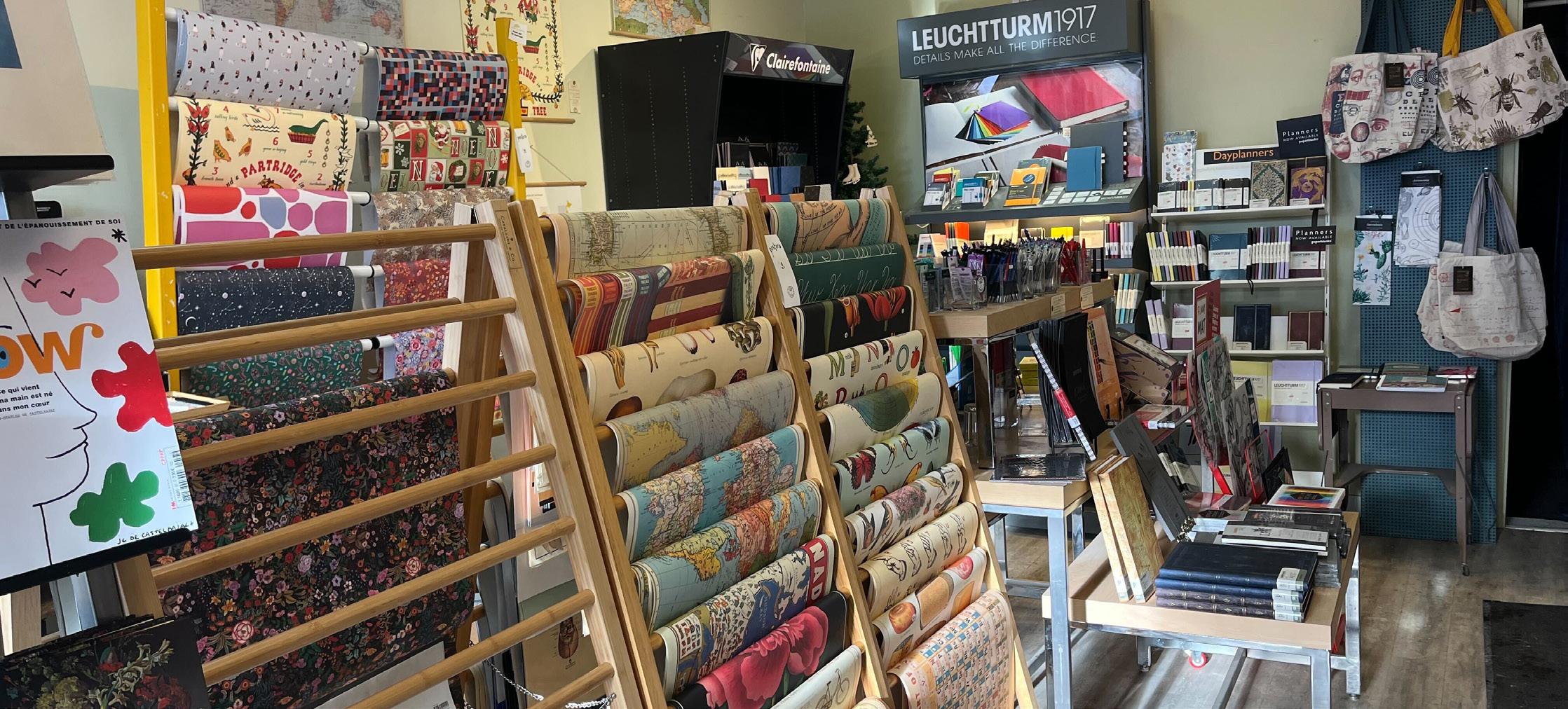 handwriting analysis to botanical ink making and bullet journaling; and 70 days of consecutive paper craft videos at 2 p.m. throughout the pandemic.”
handwriting analysis to botanical ink making and bullet journaling; and 70 days of consecutive paper craft videos at 2 p.m. throughout the pandemic.”
Canada hosted its third consecutive International Ice Hockey Federation (IIHF) World Junior Ice Hockey Championships after the IIHF banned Russia from all of their competitions in response to the invasion in Ukraine. The tournament started out rough for Canada, as they lost 5-2 to the Czech Republic on Boxing Day. The Czech Republic was able to capitalize on Canada’s weakness which allowed them to have great success against Canada.
Canada then went on to beat Germany 11-2, which showcased a more well-rounded Canadian
team and performance. Canada then beat Austria 11-0, highlighting the capabilities that Canada has when they work together as a team. Regina Pats player and North Vancouver native Connor Bedard – who is considered a once-in-a-generation talent –ended up scoring three goals and four assists during Canada’s win against Germany.
He then tallied two goals and four assists during Canada’s win against Austria. On the way to the quarterfinals, Canada beat Sweden 5-1. Bedard ended the game against Sweden with four assists leading into the quarterfinals. In the quarterfinals, Canada played Slovakia and ended up winning 4-3 in overtime. Slova-
kia’s performance was incredible against Canada as they were able to exploit Canada’s weaknesses just like the Czech Republic had done in the first game of the tournament against Canada. Unfortunately for Slovakia, Canada was able to win in overtime.
In the game against Slovakia, Bedard had two goals and one assist, which also included the overtime winner. Bedard’s performance against Slovakia was record breaking. He became Canada’s all-time goal leader with 15 goals, Canada’s all-time points leader with 32 points, and Canada’s single-tournament points leader with 19 points.
After the record-breaking performance, Regina local Jor-
dan Eberle congratulated Bedard after he broke Eberle’s record of being Canada’s all-time leading goal scorer. After Canada’s win against Slovakia in the quarterfinals, Canada would go on to play the United States in the semifinals. Canada beat the United States 6-2, however it didn’t come without its controversy.
Canada started the game trailing by 2-0, but were able to bounce back. However, the controversy came when the United States had two disallowed goals. Both goals were disallowed due to goaltender interference. The international rules surrounding goaltender interference are different than that of the IIHF. In accordance with rule 69.1 of the
game would end 2-2 in regulation time, causing the game to go into overtime.
Canada would end up scoring in overtime to win the World Junior Championships with a goal from Dylan Guenther. The goal showcased a great build-up play from Canada as Joshua Roy made a move around the Czech defender, then passed the puck across to Guenther who was able to slot it home for Canada.
Bedard was awarded the World Junior MVP of the tournament after his record-breaking performances throughout the tournament. He was also granted the Top Forward award and Media All-Star award for his performance. Bedard finished the tour-
IIHF Rule Book, “Goals should be disallowed only if: an attacking Player, either by their positioning or by a ‘relevant contact,’ impairs the Goalkeeper’s ability to move freely within their Goal Crease or defend their goal; or an attacking Player initiates international or deliberate contact with a Goalkeeping inside or outside of their Goal Crease.”

The first disallowed goal saw the most controversy, as many believed that there was little goaltender obstruction during the US goal. However, the officials saw enough obstruction even after review to disallow the goal. In the finals, Canada ended up playing the Czech Republic again and hoped for a different outcome than their 5-2 loss in the first game of the tournament. This was the first time that the Czech Republic had made the final since 2001, while Canada was hoping for consecutive gold medals for the first time since the 2008 and 2009 World Junior Championships.
The final was intense, with the majority in attendance supporting Canada. Canada led the Czech Republic 1-0 after the first period with a goal from Dylan Guenther. Canada would add to their lead in the second period with a goal from Canada’s captain Shane Wright, who happened to be celebrating his 19th birthday on the day of the finals. However, in the third period, the Czech Republic responded by scoring two goals, which tied the game. The
Leaving the opposition shaking in their skates once again. Image:
nament with nine goals and 14 assists – which is a new Canadian record – and 23 points, which is also a new Canadian record. The Czech Republic medalled for the first time since 2005 after their outstanding performance throughout the tournament, including both of their games against Canada.
Canada’s championship win is Canada’s 20th title at the World Junior Championships, which is the most of any country, with the former Soviet Union holding only eight titles and the United States and Finland having five titles each. Canada’s performance wasn’t overly consistent, and mistakes led to uncertain moments at times, however Canada was able to strategize and find a way to win.
Bedard will be back with the Regina Pats and alongside his Pats teammate (and Czech Republic team captain) Stanislav Svozil as they finish off their season. Bedard is eligible for the upcoming 2023 National Hockey League Draft and is projected to be the number one draft come draft day. Canada should be proud of their performance and their ability to fight through adversity to accomplish consecutive gold medal performances at the IIHF World Junior Championships. Mark your calendars, because the 48th iteration of the IIHF World Junior Championships will be hosted by Sweden starting on Boxing
of 2023.
Day
The Canadian team earned their 20th title at this tournament, with local players breaking long-standing records
sophia stevens s&h writer
“Bedard’s performance against Slovakia was record breaking. He became Canada’s alltime goal leader with 15 goals, Canada’s all-time points leader with 32 points, and Canada’s single-tournament points leader with 19 points.”
– Sophia Stevens
Whether you are a full-time Saskatchewanian and have been living here your entire life or you just recently moved here, the Carillon did some research for this article to assure that it is beneficial for everyone. In the past, maybe in the month of December, did you see this warning on your weather app: “Extreme Cold Weather Warning?” Did it ever make you curious why or what specific temperatures make these warnings become relevant?
Through the CBC, extreme cold weather warnings happen when the temperature – with or without the windchill – reaches -40 C for at least two hours. Typically, when the temperature is that low, you put your body and skin at risk of frostbite. The CBC states that, typically, your body has a chance of freezing when it is exposed to extreme cold for an extended duration of time.
In temperatures between 0 C to -28 C, your body is at low risk of getting frostbite. Once the temperature reaches below -28 C, this is when you start to put your body and health at risk. It appears that in temperatures between -28
C and -39 C, when your skin is exposed to the cold for 10-30 minutes, you can get frostbite. As temperatures get colder, the amount of time required outside before frostbite sets in gets much shorter, meaning that when it is -39 C to -47 C your body is at a high risk of frostbite.
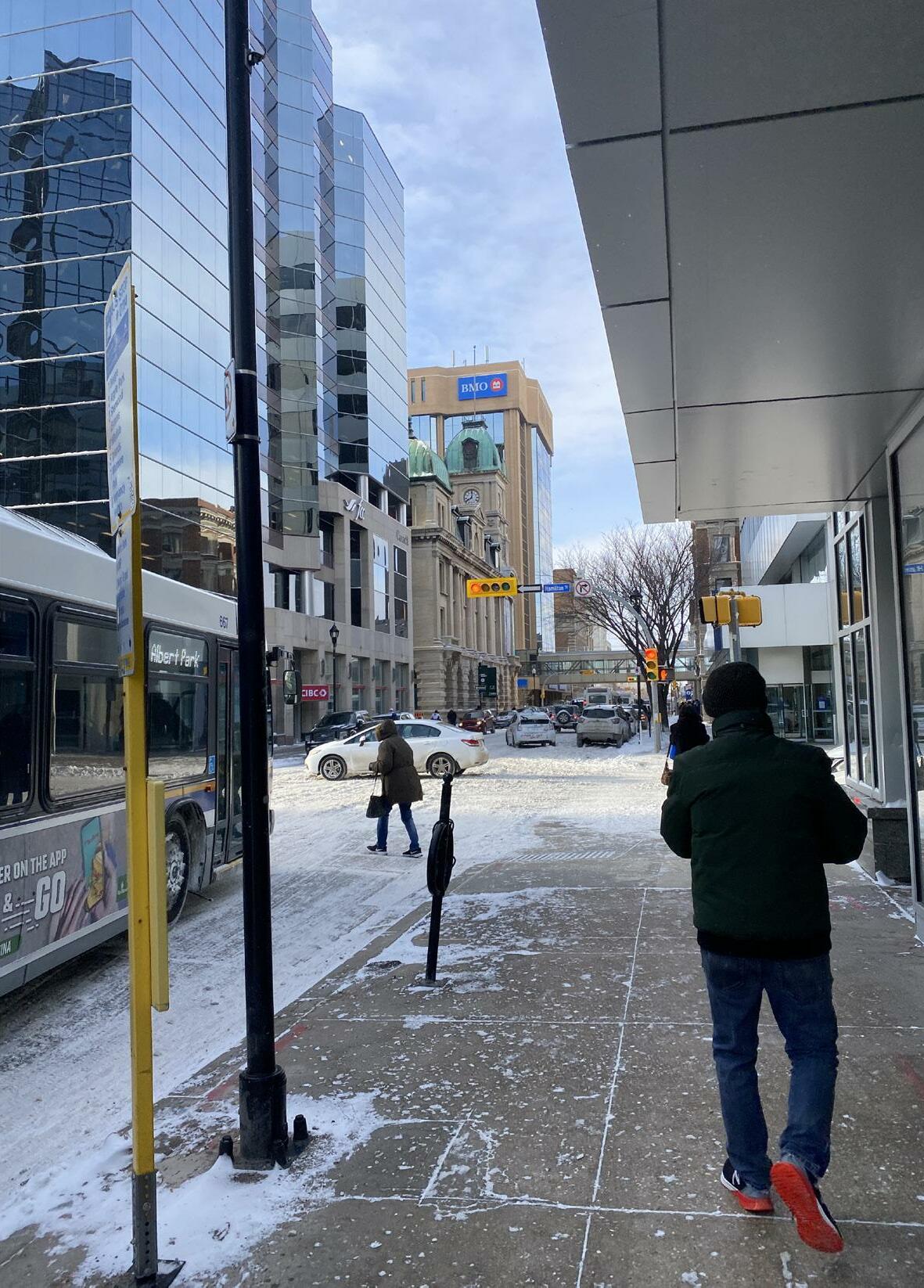
The next warning is that you must be extremely careful because the chance of you getting frostbite can take anywhere between two and five minutes when the temperature is between -47 C and -54 C. If the temperature is below -54 C, it can take two minutes for your skin to get frostbite. Even though these are the records that are stated by CBC, remember that everybody is different and can be affected differently. Make sure to dress warmly for the weather to keep yourself safe.
This brings us to the next topic: where can you, as a student, find some quality clothing when in need? One main place that a great deal of university students may have access to is through the University of Regina Students’ Union (URSU). Based on their website, they have options to do-
nate clothing on campus, and the resources that they are given are handed out to students through the pantry. All remaining clothing that is not taken will be given to businesses in need such as Carmichael Outreach.
Not only does URSU take donations of clothing, they also run the “Pantry Program.” This is a program that helps students who are facing food insecurity. The process to gain access to this program seems quite easy and should be easily accessible for most university students as pickup of the pantry goods happens on campus. If you are interested in gaining access or finding more out about the program, be sure to check out their website.
Lee LimChristine Sinclair is known as the best female soccer player that Canada has ever produced. She is an Olympic gold medallist and is the world’s all-time leading goal scorer with 190 international goals for Canada. She has been a part of a generation of female players who have helped shift the narrative of women’s soccer both in Canada and around the globe.
Her journey to stardom was different from that of young and upcoming players today like Jordyn Huitema, who went pro after graduating from high school. For Sinclair, there were no female professional leagues, and many professional leagues in which she participated ended up folding. During Sinclair’s youth, the only pathway to play soccer at a higher level was to play through the college level.
The rise of consistent women’s leagues across the globe shifted after the 2012 Olympics, when professional women’s leagues regained popularity. The 2012 Olympics also shifted the narrative of women’s soccer in Canada when Canada won the bronze medal. In her recent memoir, Playing the Long Game, Sinclair discusses the importance of having a professional women’s league in Canada.

Canada is currently the only team within the FIFA top 10 rankings that does not have a professional women’s league within their country. In recent years, there has been a shift in implementing semi-professional teams in Canada. However, there has also been a lack of urgency by top
Canadian organizations and associations to implement the goal of a professional women’s league within Canada. In her memoir, Sinclair explains how incredibly talented players within Canada have not represented Canada at the international level due to not being able to showcase their talents to national team coaches and personnel.
The opportunity to showcase the talent that Canada has is imperative in being able to compete at the highest levels, such as competing at the World Cup. Canada’s u20 women’s national team
recently lost all their games at the u20 World Cup, being beaten by France, South Korea, and Nigeria. These losses highlight the ever-growing need for a professional women’s league within Canada that can help in the development of future national team members.
A month after Sinclair’s book was published, she sat down for an interview with her former national teammate Diana Matheson to discuss their joint venture: creating a professional women’s league within Canada starting in April of 2025. The league will consist of eight professional
teams, with each team having at least one national team player on the team. The Vancouver Whitecaps and the Calgary Foothills Soccer Club have been the first clubs confirmed to be taking part in the new league. Air Canada and CIBC are already on board to become sponsors for the league. The buy-in for the league is expected to be between $8-10 million, however the investment is predicted to be worthwhile.
The aim of the league is to have healthy salaries for players while providing respectable workplace environments for them as
well. It will be interesting to see the success of the league, especially since soccer is continuing to grow within Canada. The idea of the league is to inspire the next generation of female soccer players competing in Canada to showcase that it is possible for female soccer players to live out their dreams within Canada. Who knows, maybe one of the professional teams will be located in Saskatchewan, inspiring the next generation of female soccer players within our province.
Learn which temperatures to be careful around and how to take advantage of university resources to get properly bundledfor the cold Christine Sinclair unveils a professional league to promote careers in soccer among young Canadian women A season to remem-burr.
The winter semester has just started, and many of us are scrambling to purchase calendars and planners, figure out our schedule, and see how this semester will fit into our lives, among a multitude of other things. The winter semester is different from the fall semester in that the winter semester marks a new beginning. It’s a brand-new year. There are 11 other months left to decide how you want your year to go. Furthermore, the university is lively and bustling. It is back to how things used to be preCOVID. It has only been a few days of school and I am already exhausted and want to go back to being a hermit!
This semester has been off to a great start. There are more food options on campus, more resources, and more opportunities to be involved in different clubs and organizations. I feel like this is my first semester back as I am taking more in-person classes compared to before. The one thing that COVID has made me realize is that I will do anything - absolutely everything
- to avoid an in-person class. I want to start my day off waking up at 8 a.m., getting my laptop, turning it on, getting on Zoom for class while still in my pajamas, ensuring my camera and microphone are off, and going right back to sleep.
Feel free to judge me. This is a safe space. You’ve done it, I’ve done it, it’s okay to admit it. There is no shame in that.
I am still facing a culture shock when it comes to in-person classes. I haven’t had in-person exams in years at this point, and I don’t even remember how we all used to take them pre-pandemic. How on earth would we sit in huge rooms with many cameras facing us, instructors and TAs walking up and down every aisle, and the heavy hundred-page exam booklet? There was always so much anxiety and tension in the room. You could see it painted on everyone’s face, the terror of final exams. I will never understand how we are all just supposed to immediately return to that and re-acclimate ourselves to it. It is going to be an interesting journey.
Ultimately, this is what we signed up for when we decided to pursue higher education. There
is sadly no evading it. It helps to know that there are many people in the same boat as you. This is a universal feeling across every department.
My advice is to be open to growth and change. It’s important to understand that this is a small chapter of our lives. At times it might feel as though you have been in school forever and you feel so far behind. The fact that you are pursuing academia means that you want to grow. You want a future of personal development and better opportunities. Thus, there is no such thing as being behind. You are exactly where you need to be.
If we have learned anything from the pandemic, it is that life happens, unprecedented things happen, and they derail your goals and plans at times. It is not something that we can predict. All you can do is be kind to yourself and remind yourself that you are doing the best you can with the resources available to you and the knowledge you currently have.
If you slip and fall on your back, at least the sky looks beautiful.
Some have said that humans are inherently good for reasons like our ability to learn through the course of our entire lifetime, to better our knowledge of the world and our practice of interacting with it. We’re also quite averse to being stuck (psychologically or physically) for too long. We don’t like static, stagnant places, so one way or another we work to grow from where we are at present. From this view, progress is inevitable as long as existence continues, making that push for growth an inherent part of our makeup.
On the other side are arguments for the inherent corruption of humanity, like the current extent of prohibitive laws across the globe. This side proposes that, were people inherently good, we wouldn’t need to prohibit and punish things like theft, domestic abuse, or terrorism, because they quite simply wouldn’t be happening.


Others take a step beyond those sweeping-judgment positions and work case-by-case, categorizing the individual people they encounter as either inherently good or bad depending on experiences with and knowledge of them. This can make navigating social situations quite simple. All you need to know is whether someone’s been good or bad and your attitude, actions, and reac-
tions are easy to determine. There is a downside though, in that this is still a sweeping judgment that dictates good and bad as permanent traits; someone who is bad has always been bad, and someone good will forever be good.
What I’m hoping to get across is that people just aren’t that simple; goodness and badness aren’t traits, they are states. A trait is something that remains relatively stable in a person throughout their lifetime. Good examples would be hating certain food textures, having wide feet, or being an outgoing and extroverted person. Someone with wide feet will likely have wide feet their whole life, regardless of context. The degree of wideness when compared to others will increase and decrease depending on the sample, but they’ll still generally have wide feet.
I see positioning goodness and badness as traits to be woefully incorrect and inherently harmful. It puts up barriers to the amount of growth possible, cutting motivation to change off at the knees. If I believe I’m inherently, wholly bad, then what’s the point in working to change? If that’s truly something ingrained in my core then it would be a waste of energy to try, or to even think of ways I could try, because the goal is unattainable. Best case scenario, I wind up frustrated I couldn’t fix things and apathetic because of course that’s the outcome.
Positioning people as inherently good also causes problems, especially when people see themselves through this lens. When a person decides that they are inherently, wholly good, they are no longer open to hearing about ways they may have hurt others because that simply isn’t something a good person like them would do. The possibility they could have caused harm registers as a misunderstanding at best, or an unjust and personal attack at worst.
One way to illustrate this would be with someone who’s made the conscious decision to not be racist, but who also views themselves as inherently good. They will likely put in effort to not intentionally, actively, violently be racist. All good steps, but since everyone has some level of internalized racism and we have to function with institutions rampant with systemic racism, things will still come up.
Someone with the inherently good view will not be looking for ways they could have been racist so they can prevent them in the future, won’t be critically and continuously engaging with their attitudes to better their actions, and definitely won’t be open to hearing if others think they have been racist because it literally can’t be incorporated in their self-schema as an impact of their actions.
Goodness and badness are just states. They are things that we can be but they are not per-
manent. Holding present the idea that I am capable of doing harm is actually a way for me to protect the people around me, because I’m more engaged in considering my actions beforehand, in holding myself accountable for them, and in learning to adjust them so I’m able to stop causing harm because I recognize it for what it truly is. Holding just as present the idea that I am capable of doing good works in tandem with the opposite potential,
motivating me to put in the effort to change because I’ve seen how that change benefits me and the people around me.
As in all things, the answer is both. People aren’t good or bad, but they have great capacity and opportunity to reach both extremes at times. Don’t blind yourself for temporary comfort by deciding that you are, have been, and will only ever be good. It’s only going to be comfortable for you (intermittently).
Humans are complex, always in a state of flux Beware the good peopleIllustration: Lee Lim Life is full of dualities, though they do not often look this serene and accepting of each other.
Do you remember what your first CD was? I do: Linkin Park’s Meteora. I cherished that disc and played it so many times that the data became inscrutable to any laser. Then came my dalliance with Modest Mouse and their plethora of albums. The first I owned was We Were Dead Before the Ship Even Sank. It was also the album that induced my passion for them; particularly track three, Fire it Up, with its infectious and inundating bass line coupled with the soft voice of Isaac Brock. It is still a personal favourite to this day, almost two decades later (17 years, to be exact).
And I still have my entire CD collection, which used to be alphabetized, in a clunky, black, zip-up case. When I flick through those CDs — a rare occurrence, I’ll admit — it is a literal time machine, transmuting me through time and space to no-longer-extant places: CD Plus, where I got many random CDs based purely upon album art and band name (Architecture in Helsinki, Dr. Dog, and Vampire Weekend were some of the choice finds from this ad hoc method); HMV, where I have a lost treasure trove of points nev-
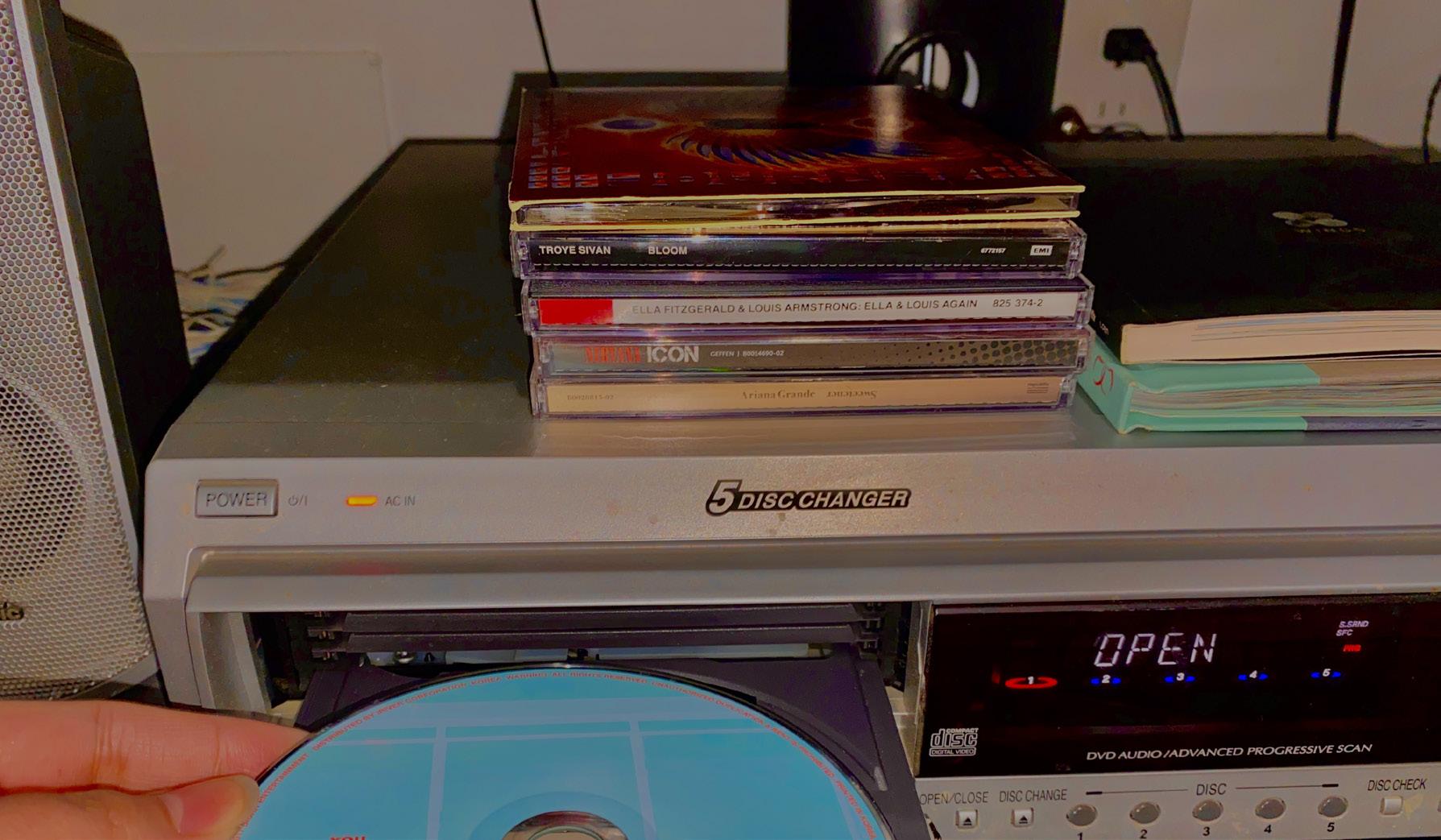
er to be redeemed; my erstwhile friend’s house, now demolished awaiting a new building to be erected, where we listened to the two Hawksley Workman albums, Meat and Milk, that had been released within three months of each other.
This is all to say, I think something is lost when music-listeners merely interact with music via a streaming service, be it YouTube, Spotify, Apple Music, what-haveyou. Obviously the sensory modality of touch, the entire tactile experience, is gone, truncated to a simple gesture of the thumb. So, too, are the oddities of lyric books, band art and photos, secret posters, and hidden tracks: I recall the first one I found — it was on a k-os album — and it brought me such glee to have stumbled upon it because I was simply too lazy to hit next.
The comfort of perfect curation is also jettisoned. With an album, one is confronted with an ostensibly well-planned and produced album, one that merited the use of physical resources to be wrought and sold to the masses; on Spotify (I speak of it because I, too, use it), unless you create your own playlists, which I’m sure many do, you are confronted with a barrage of algorithmic garbage that suggests what it believes
Late last year, Amazon founder and CEO Jeff Bezos announced that he would be donating nearly all of his immense fortune to charity. He specifically mentioned that he would like to donate to organizations working on climate change and social justice issues, which on the surface is admirable. But Bezos is not the first billionaire to propose something like this.

Microsoft founder and former CEO Bill Gates used to be the richest man in the world, until he donated enough of his net worth to charity to lose that spot. Once again, this looks very admirable on the surface. Add to that the fact that Gates has also promised that, except for a small inheritance to his children, all his wealth will be donated to charity upon his passing, and it really looks like these people value charities and the culture of giving to worthy causes. However, the question has to be asked: who decides what is worthy of these billions?
Let us focus on Jeff Bezos first. Amazon is notorious for its shoddy employment practices. A few years ago, it came to light that Amazon warehouse workers work under immense time and target pressures. That one-day free shipping Prime delivery we love so much often comes at the cost of workers who are not allowed to sit for hours on end, who are given less than half an hour of break in a whole day, and let us not even
get into the question of bathroom and water breaks!
On top of that, their wages are often tied to the number of parcels they ship off every hour, giving most workers even more incentive to do back-breaking work for hours without any respite. One has to wonder how the average warehouse employee, with little pay, almost no benefits, and an almost-hostile working environment feels when they hear about the boss donating billions for social justice. It almost seems to me that if Bezos wants to help the oppressed and disadvantaged, he just has to make sure his own workers are treated better and offered better compensation.
The billions that he wants to give to charity could offer excellent salaries and healthcare for every Amazon worker. We cannot even argue that charitable giving gets him a tax deduction, because so would paying his workers more. I guess it comes down to the fact that donating to charity makes someone look like a hero, but paying a fair wage to employees does not. We need to ask ourselves who benefits from that skewed perspective.
As I already mentioned, another billionaire who is already famous for his philanthropic giving is Bill Gates, founder and former CEO of Microsoft. At least when it comes to Gates, there are fewer controversies about how Microsoft employees are treated and compensated for their labour. Of
you’ll enjoy.
However, I find that my taste can’t be limited to, as Tara Johnson for Tinuiti.com wrote: “Spotify’s algorithm [that] analyzes three main features when determining [how] to recommend content: lyrical content and language, song features, and past listening habits.” I’ve found the algorithm importunate and poor at its intended function. There is no way to synthesize the disparities between Frederic Chopin, Yung
Gravy, and Feist.
Then, to sift beyond the front page of “curated” playlists is like navigating in a foreign city: there is some way to get what you want, yet you lack the ability to know exactly how amidst the tangles of the internet. The lethargy and paralysis induced by such a wall is difficult to overcome.
I, too, regret the loss of choice, which sounds ridiculous when we are presented with an infinitude of choices via the panoply of
streaming services available. Yet, how many times have you opened Netflix or Spotify with the desire to consume novel material and it results in either a 30-minute meander through the wireless void or a default to the familiar? At times, it can be a comfort to be constricted in choice. Soon I’ll go and grab Modest Mouse, pop it in the car, and skip to track three, letting the bass and tangibility wash over me.
course, I have to cynically point out that Microsoft mostly has to employ skilled engineers who could probably find another job without too much trouble if they hated the workplace environment they found themselves in. It is just not that easy to oppress and exploit people who have other options.
This is not to imply that Microsoft would have done so otherwise, just pointing out that at least at present, it is not an option they find themselves able to take. Moving on, though, while Gates is famous for how much he do-
nates, there have been controversies about how his generous gifts come with strings attached. Most recently, Gates used his influence to severely restrict the patent rights for mRNA vaccines with the threat of cutting off donations on vaccine research if the patent was made available to India and other developing nations.
That is my entire point. Whether we are talking about the workplace in Amazon or access to healthcare, these are rights. What I want to see is a world where the Bezoses, Gateses, Musks, and Zuckerbergs are taxed fairly, held
accountable, and the rights of the average citizen are not left to the generosity of billionaires who need some good press. Because just like how the Bezos of this world can donate billions to social justice, they can cut off funding to social justice. A world where human rights depend on the kindness of ruthless businessmen is not sustainable.
Streaming services try to be efficient with music, but why be efficient with art?Photo: Lee Lim
while states fail and people sufferPerhaps the other people look so worried because Gates is able to cut off funding and access to their life’s work simply because he has the funds to do so? Photo: ICRISAT via Flickr
